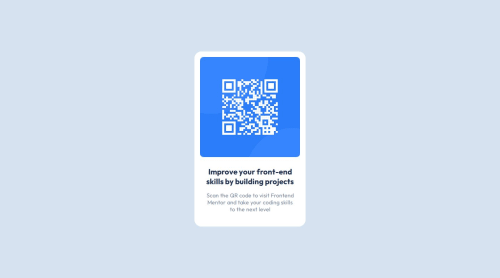QR code component using box model and flexbox

Solution retrospective
I am proud of that I accomplished this task very quickly and practised my box model knowledge also I could use css custom properties. I want to use scss and bem next time.
What challenges did you encounter, and how did you overcome them?In this chellenge I struggled with centering the text especially paragraph However, figma helped me to figure out how much padding and margin to set. In addition, I used flexbox to center the div for the first time it didn't work but I googled a little bit and discovered about min-heght should be set to center vertically otherwise it doesn't work.
What specific areas of your project would you like help with?I completed this task quickly and design matched, although, I am having issue with responsivnes in small sizes. Could you help me if it is possible. Thanks
Please log in to post a comment
Log in with GitHubCommunity feedback
- @Tripouille
Hi Sagi !
Congratulations on your work! I noticed that adding height and width attributes to the img tag can really help minimize layout shifts, which is awesome.
Also, considering accessibility, it might be beneficial to steer clear of using pixels for font size. I took a peek at your CSS file and thought you might find a lot of value in using an auto formatter like Prettier, it could streamline your workflow.
Another tip I have is to create classes for styling, it not only enhances maintainability but also makes your code more readable.
Keep up the great work!
Marked as helpful
Join our Discord community
Join thousands of Frontend Mentor community members taking the challenges, sharing resources, helping each other, and chatting about all things front-end!
Join our Discord